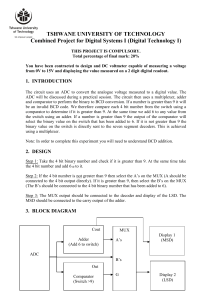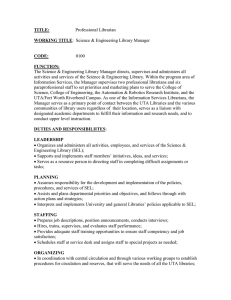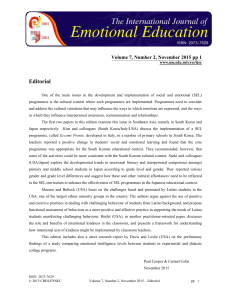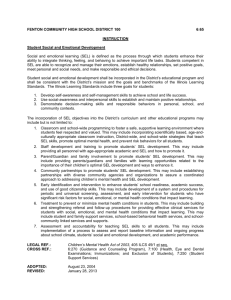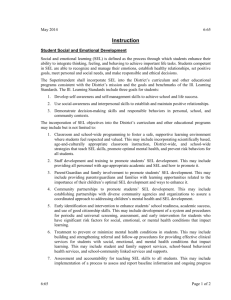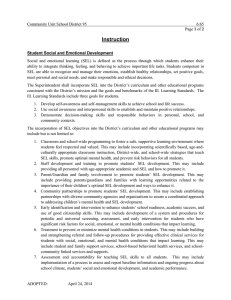University of California at Berkeley College of Engineering
advertisement
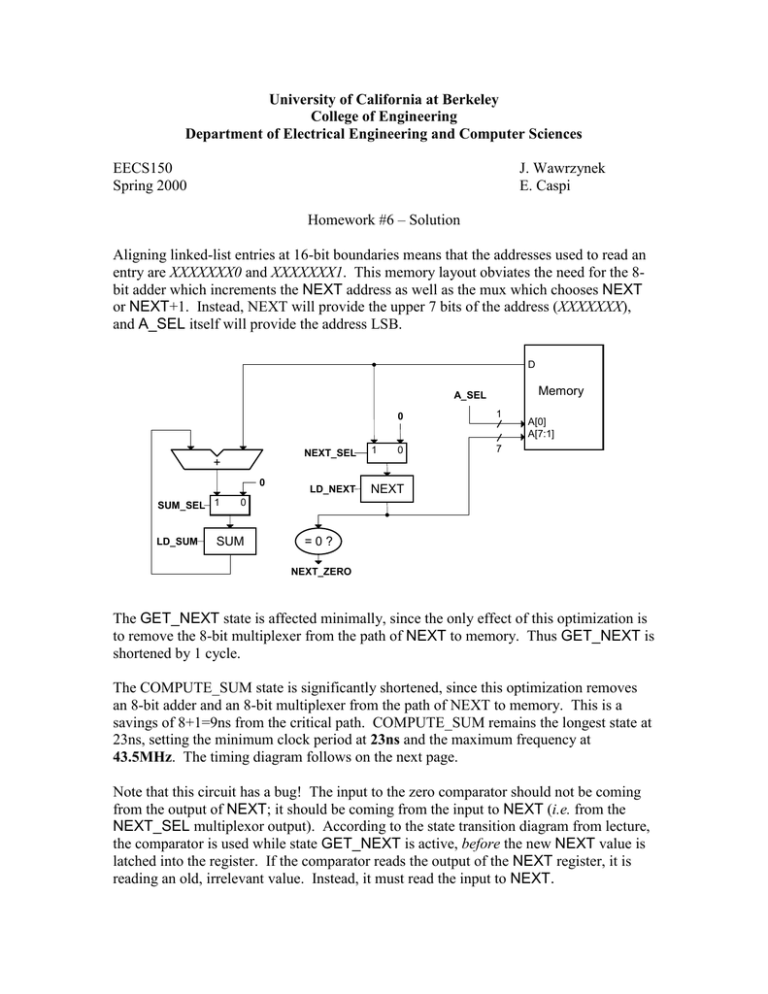
University of California at Berkeley College of Engineering Department of Electrical Engineering and Computer Sciences EECS150 Spring 2000 J. Wawrzynek E. Caspi Homework #6 – Solution Aligning linked-list entries at 16-bit boundaries means that the addresses used to read an entry are XXXXXXX0 and XXXXXXX1. This memory layout obviates the need for the 8bit adder which increments the NEXT address as well as the mux which chooses NEXT or NEXT+1. Instead, NEXT will provide the upper 7 bits of the address (XXXXXXX), and A_SEL itself will provide the address LSB. D Memory A_SEL NEXT_SEL + 0 SUM_SEL 1 LD_SUM LD_NEXT 1 0 1 0 7 A[0] A[7:1] NEXT 0 SUM =0? NEXT_ZERO The GET_NEXT state is affected minimally, since the only effect of this optimization is to remove the 8-bit multiplexer from the path of NEXT to memory. Thus GET_NEXT is shortened by 1 cycle. The COMPUTE_SUM state is significantly shortened, since this optimization removes an 8-bit adder and an 8-bit multiplexer from the path of NEXT to memory. This is a savings of 8+1=9ns from the critical path. COMPUTE_SUM remains the longest state at 23ns, setting the minimum clock period at 23ns and the maximum frequency at 43.5MHz. The timing diagram follows on the next page. Note that this circuit has a bug! The input to the zero comparator should not be coming from the output of NEXT; it should be coming from the input to NEXT (i.e. from the NEXT_SEL multiplexor output). According to the state transition diagram from lecture, the comparator is used while state GET_NEXT is active, before the new NEXT value is latched into the register. If the comparator reads the output of the NEXT register, it is reading an old, irrelevant value. Instead, it must read the input to NEXT. SUM setup, 0.5ns SUM load mux, 1ns SUM_SEL mux, 1ns NEXT Clk-to-Q, 0.5ns .5 1 Memory, 10ns SUM adder, 10ns CLOCK NEXT SUM Total, 23ns Timing diagram for COMPUTE_SUM state 1 .5
